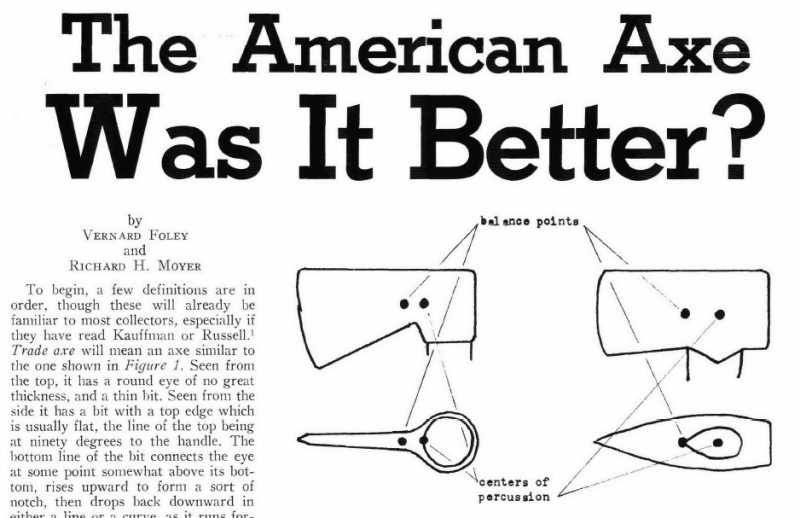No, not a straw man argument. You continually refer how you think that the axe handle makes more sense to reference because it's not an invisible line. I'm saying that the axle makes more sense because its where the axe is actually balancing and therefore where it wants to center its lateral rotation. Because it contains the CoG, it's also the line along which it will balance fore/aft when held 90° to the horizontal.
It would want to inherently move, but the purpose of mentioning this was not that the force had a major impact on the axe in fore-aft pivot, but rather that it represented starting the axe in your example from a starting position that did not properly constrain the effects of moving the CoG. This is much like when people make the old flat vs. convex edge argument by saying that a convex is stronger because it fits outside the bounds of a flat V when the three points are kept the same...the reason it is stronger is actually because in the process of that manipulation the edge angle has been made thicker, and so for the basis of comparing geometry the edge angle needs to be held constant. In this case, the starting position of the CoG should always be in the starting position that results in zero torque in 2D profile.
And that's fine, but it doesn't change the fact that the behavior occurs--it only quantifies it. There's value in that, but the more fundamental matter is that those forces and behaviors are present at all. You had said:
It's true that if you limit motion to only fore/aft without permitting lateral rotation then only the fore/aft torque and the handle matter significantly, but...axes don't move like that. In cases where the axle sits forward of the handle the user has to be trying to constrain the input force on the handle to the 2D plane of the stroke because the greater the distance of the handle at the grip point from the axle the greater the leverage any lateral motion at that point will have on the axle, making it easier to cause it to wobble if there's any deviation
My actual claims aren't changing. I keep trying to explain it in ways that you're able to digest it because it seems to me that you don't fully get it yet. Again, this is something that's conceptually and practically very simple to see and feel--but it's hard to put it into words that are suitably effective at communicating that information. I appreciate the fact that you went through the effort, but it has only a minimal impact on the core concept. The desire to tilt forward or backward when the CoG is changed while keeping the edge position fixed in space is only significant from the standpoint that it shows that the tool is starting from a position that is not neutral like it was before, and that it would need to have its pivot corrected in order to keep that torque you're discussing equal to before at the start of the stroke.
I'm "clinging" to it because they're not flaws in my understanding of how the tool wishes to behave--I've rather apparently failed to communicate it in a way where you understand what I'm trying to get at. The reason why it's important that it want to move in that way to bring itself into balanced suspension is that it represents a shift in the axle, which is the axis around which the tool wants to rotate. This means that how the handle is oriented relative to the axle has changed and there may now be more or less potential for wobble as a result.
See above. The importance is less so about the quantity of the force as much as what the presence of that force is indicating. Granted that the greater the force, the more change has been enacted, but the fact that it is a much smaller force than gravity acting on the axe when horizontal is inconsequential to its significance. It's mostly about what impact that's had on the axle position relative to the handle and if the altitude of a second grip point has been increased or decreased as a result, and/or if the handle has changed from following to leading the CoG (though this isn't likely under most circumstances.)





